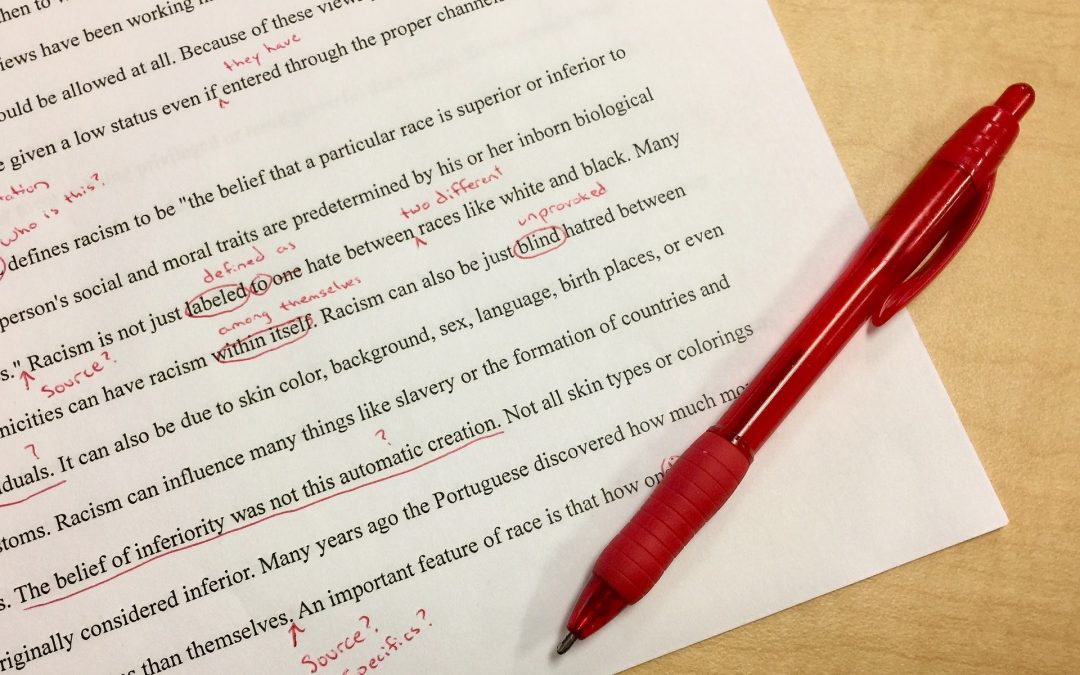Your former teachers may have told you this during your studies: “Read your work carefully before handing in your copy!”. Indeed, the slightest nonsense, spelling or syntax error can get you in (serious) trouble. This is why you should absolutely proofread your translation before delivering the definite version.
“Hey wait a minute: do you have to proofread or edit a text? Isn’t it the same thing after all?”
If you’re asking yourself this question, this is precisely because there is a difference! However, it is not very clear-cut for neophytes and even some translators. So, what is the difference between proofreading and revision? Let’s get to the heart of the subject with Acolad Community, with an article that, of course, the whole team proofread. 😉
Proofreading VS Revision
Proofreading and revision are part of the same process, which is text editing. You should keep in mind that they must be done by different editors one after the other, and not the other way round.
Revision is an in-depth editing of the text. Hence the editor’s goal is to make its content more natural and fluid by tracking errors such as nonsense, mistranslations, repetitions, as well as omissions. The editor also changes the overall structure of paragraphs and rephrases or rewrites complex sentences when needed.
On the contrary, proofreading is a lighter editing of the text and complements the revision. The proofreader checks all spelling, grammatical, typographic and punctuation errors and the layout of the text. It is generally done for the last version of the text before the submission.
If proofreading seems easier at first sight, we should not think that proofreaders only check punctuation, grammar and spelling mistakes. Proofreading is just as important because you have to know linguistic and typographic rules of a language by heart and use your eyes as a scanner leaving nothing to chance. It’s the icing on the cake for a perfect translation. 😉
Can I proofread my own work?
It is better that another person proofreads your work. No matter how many times you go through the text, you will always miss a little detail because you read what you expected to read, and your brain ignores some inconsistencies and typing errors. With the help of a proofreader, you will read your text “afresh” and in a new way spotting errors you wouldn’t have seen before. This is what the Germans call the four-eyes principle.

In the case you don’t have a proofreader close by, worry not: just always try and do your best before handing in your translation. Some web applications like Grammarly and Antidote allow you to proofread your work yourself.
Who practices proofreading?
The proofreader, either a freelancer or someone working for a translation agency, should, of course, have an excellent knowledge of all the grammatical, spelling and syntactic rules of the target language. Proofreading is mostly done in an agency by a project manager with a perfect mastery of the target language of the project. You can also have the help of an expert from the domain of the text subject matter, who checks that all terms and turns of phrases used are relevant.
All right! But how do you proofread a text well?
There is no magic formula for proofreading by yourself. Nevertheless, there are several ways to proofread (by yourself) well:
- Slow down or punctuate your reading: words are music, you must play with it to highlight chunks of phrases you were only reading with your eyes before;
- Read the whole text out loud, as if you were learning some poetry, like you would as a child. You will then « hear » words and bring out errors that you couldn’t spot during a single visual reading. If the sentence sounds « awkward », it’s because there’s an error! ;
- Read sentence by sentence from the end to the beginning or read each sentence twice;
- Read the text again backwards, in other words from the final period to the capital letter at the start.
Whatever your technique is, proofreading is always done several times! 😉
